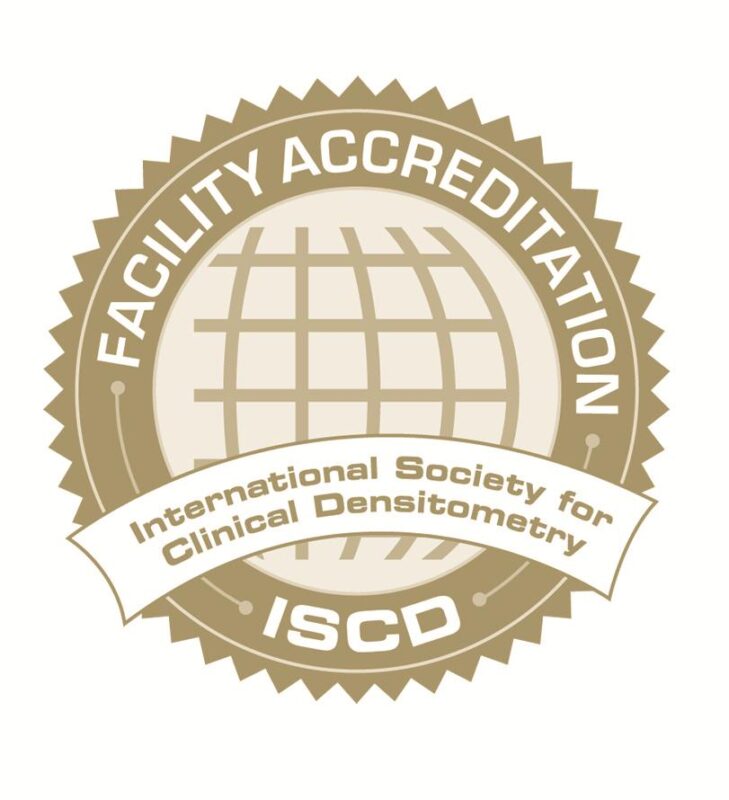

ISCD Facility Accreditation Program (FAP)
The ISCD Facility Accreditation Program (FAP) comes about from over 20 years of educating and advocating for QUALITY in the field of skeletal health assessment. We are the premier and ONLY accrediting body in this field.
Our DXA Accreditation Program brings together all the components of quality output within a facility. Through FAP, your facility’s DXA Personnel, DXA Equipment Quality Assurance (QA) and Quality Control (QC), Scan Acquisition and Analysis and Scan Interpretation and Reporting will be evaluated. These four core areas, known as the four essential elements, are critical to providing quality DXA service. Through evaluation of documents submitted and satisfactory completion of the program, facilities become eligible for a five year accreditation.
Once accredited, your facility will be recognized by patients, peers and the community as obtaining an impressive achievement in the field of quality skeletal health assessment.
Apply NowWHY ACCREDIT?
Protects and reassures the public that clinicians and technologists meet standards for quality patient assessment based on current scientific knowledge;
Verifies to payers that quality standards are in place.
Enhances standardization and improves accuracy and precision by requiring a uniform approach to nomenclature, data collection, acquisition, analysis and reporting.


Program Requirements
The New and Improved ISCD Facility Accreditation Program (FAP) is a practice-based assessment of facilities that perform and report bone densitometry measurements in clinical settings. To be accredited, facilities must complete a self-assessment application which documents performance objectives. These objectives include four core areas known as the four essential elements, which are critical to providing quality DXA service. The Essential Elements are listed below:
- DXA Personnel
- DXA Equipment Quality Assurance (QA) and Quality Control (QC)
- Scan Acquisition and Analysis
- Scan Interpretation and Reporting
Bone Densitometry facilities currently eligible for this program are DXA scanner installations located in hospitals, medical clinics, private medical offices, research facilities (capable of generating DXA reports), mobile DXA centers, and free-standing imaging centers that perform DXA of the spine, hip, and forearm in human subjects for diagnosis, fracture risk assessment and monitoring.
APPLICATIONRe-Accreditation Application
ISCD will email your designated facility contact the Re-Accreditation documents at least 90 days prior to your expiration. If the contact information has changed, please contact the Facility Accreditation Department.
Questions:
Contact: Assistant Executive Director
E-mail: facility@iscd.org
Phone: 860.259.1029
Fax: 860.259.1030
FREQUENTLY ASKED QUESTIONS
DXA facilities must have at least one primary interpreter and at least one primary technologist certified by ISCD or an acceptable equivalent. If the Facility has more than one certified technologist or Clinician/Interpreter, the facility will designate one primary technologist and one primary clinician/interpreter for the application.
The Designated Primary Technologist’s submissions and Designated Primary Interpreter’s submissions carry the most weight with assessors when the application is graded as a whole. Each facility shall designate a Designated Primary Interpreter (DPI) that is responsible for upholding and following established uniform approaches to DXA nomenclature, data collection, acquisition, analysis, and reporting within the facility and all satellites associated with the application. The DPI oversees the training of the other Interpreters (whether certified or not) and the quality of scans and reports from all locations associated with the application.
ISCD Official Positions on Phantom Scanning and Calibration: The Quality Control (QC) program at a DXA facility should include adherence to manufacturer’s guidelines for system maintenance. In addition, if not recommended in the manufacturer protocol, the following QC procedures are advised: Perform periodic (at least once per week) phantom scans for any DXA system as an independent assessment of system calibration.
A procedure in which a group of individuals is scanned more than once within a short period of time (usually the same day as long as complete re positioning occurs between each scan).
15 individuals are scanned 3 times each OR
30 individuals are scanned 2 times each
For the purpose of testing a technologist’s ability to reproduce precise positioning and analysis. When properly performed, bone density measurements are one of the most precise quantitative measurements in use in clinical medicine today.
To obtain the Least Significant Change (LSC) values used by your DXA interpreters when reporting a comparison between a patient’s baseline and follow-up scans.
Also see Precision Assessment FAQs I don’t see this anywhere on the new website
ISCD Official Positions on Precision Assessment: Each technologist should do one complete precision assessment after basic scanning skills have been learned. A repeat precision assessment should be done if a new DXA system is installed. A repeat precision assessment should be done if a technologist’s skill level has changed.
A tool located on the ISCD website that allows the user to manually type in BMD values measured during in-vivo precision assessment. Automatic calculations are made for Precision Error (PE) and LSC values. ISCD offers the precision calculator as both a web based and downloadable tool to registered users for free.
Reports must be in agreement with the most up to date ISCD Official Positions. Be sure to check your reports for compliance with the Positions before submitting your application.
Identify all skeletal sites and ROIs; HOWEVER, a single diagnosis should be made based on the lowest site (lumbar spine, femur neck, total femur, one-third radius).
Give a statement of technical quality of the scan including potential limitation and rationale for any excluded ROIs.
Appropriate use of T-scores vs. Z-scores according to the ISCD Official Positions (based on patient age and menopausal status).
When using T-scores, use proper category based on criteria in the World Health Organization Technical Report Series. Geneve: WHO, 1994
The presence of a fragility fracture can indicate a diagnosis of Osteoporosis regardless of T-score.
When reporting on serial scans, indicate the significance of any change in g/cm2 and percentage. LSC values and dates of comparison scans should be included in all follow-up reports.
See report content sections of the ISCD Official Positions: Baseline DXA Report Minimum Requirements, Follow-Up DXA Report, and DXA Report: Items That Should Not be Included.
